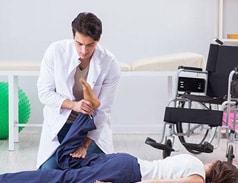Rotator Cuff Strengthening Exercises For Maintaining Muscles
How Does Rotator Cuff Impingement Occur?
The rotator cuff is a bundle of muscles around the shoulder that provide strength and stability during movement. The muscles arise from the shoulder blade over the back of the shoulder blade and connect to the head of the humerus, the large bone between your shoulder and elbow.
Rotator cuff injuries can occur at any age. In younger people, they are commonly due to trauma or come from overuse with overhead activities. Some terms that are commonly used with the rotator cuff are tears, tendinitis, tendinopathy and impingement. Rotator cuff problems are often diagnosed with the help of ultrasound investigations along with a physiotherapy assessment.
During this video, Ellen is going to show you a simple rotator cuff strengthening exercise using theraband.
The Role of Exercise in Shoulder Rehabilitation
When you’re recovering from a shoulder injury, exercise plays a crucial role in rehabilitating and building up your muscles. By doing the shoulder exercises below, you can gradually increase your strength and flexibility. This not only aids in healing and preventing further injuries but also improves overall shoulder function. So, get your exercise groove on and give those rotator cuff strengthening exercises a shot! Your shoulder will thank you for it.
Please watch the Video as Ellen demonstrates rotator cuff muscle exercises.
Rotator Cuff Exercise 1: Inward Pull:
Secure the thera-band to a door handle or another stable object. Stand with your elbow tucked into your waist. You might find it helpful to place a towel between your waist and elbow for support. Pull the band inward, across your body. Remember to set your shoulder blade back to prevent it from rotating forward. Keep your wrist in a neutral position and pull the band towards your body, then slowly release it in a controlled manner.
Rotator Cuff Exercise 2: Outward Rotation
This is similar to the previous exercise, except performed on the opposite arm, with an outward rotation. You can adjust the range of motion based on your comfort. Whether that’s just to a 90-degree angle with your body or all the way to the end range. If you’re struggling to visualise this exercise, refer to the video above.
So, if you’re experiencing any pain in your shoulder or rotator cuff, pay us a visit at Miami and Lakelands Physiotherapy. We can help you build a plan to overcome your injury and start the recovery process.
Miami Ph: 9534 4111
Lakelands Ph: 9542 9999

